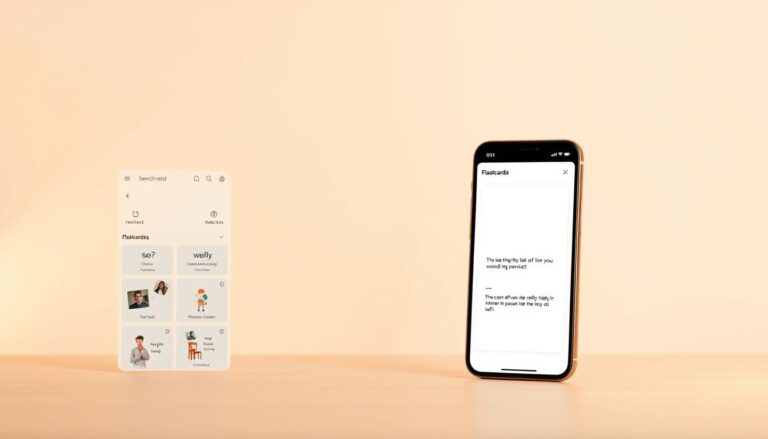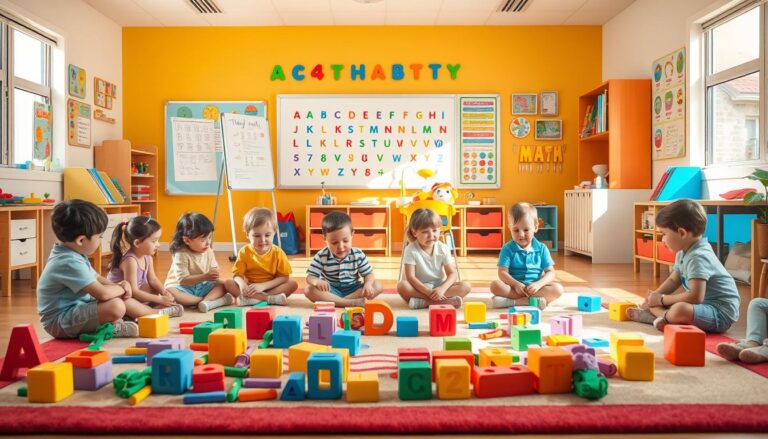10 Ways to Keep Your Child Engaged in Virtual Learning
Did you know that about 70% of teachers say it’s harder to keep young kids engaged online than in class? As more learning happens online, keeping students interested is a big challenge. Parents need good ways to help their kids stay focused in virtual classroom settings.
There are many distractions at home, like TV and family members. But, it’s also hard to make sure kids feel connected and not lonely. By understanding how kids learn differently online, you can find ways to keep them engaged. This article shares 10 Ways to Keep Your Child Engaged in Virtual that make learning fun and build a sense of community.
Key Takeaways
Use interactive tools to keep lessons interesting in an online classroom.
Personal engagement helps reduce student isolation in distance learning.
Short-term goals help students to find their progress.
Regular feedback makes students feel valued in an online environment.
Using students’ interests boosts motivation and helps keep your students engaged.
Break content into smaller chunks for better understanding in a virtual setting.
Introduce mindfulness activities to improve emotional awareness in remote learning.
Understanding the Challenges of Virtual Learning
Virtual learning has brought education to new frontiers, but it also comes with its own set of challenges that can make it difficult for students to stay engaged. For both teachers and parents, recognizing these obstacles is essential to improving the online learning experience. Issues such as distractions, different learning styles in an online environment, and keeping students engaged are just a few aspects that play a major role in how effective virtual education can be.
Potential Distractions at Home
One of the most significant challenges students face in virtual learning is the multitude of distractions present at home. In a traditional classroom setting, the learning environment is structured, but at home, distractions like TV, video games, social media, or even family members can easily interfere with focus. Creating a dedicated, quiet space free from these distractions is crucial to maintaining productivity during online classes.
Furthermore, students often struggle with the added distractions when it comes to studying or preparing for exams. A cluttered or noisy environment can lead to a lack of focus, diminishing the effectiveness of learning. To enhance online education, it’s essential to design a well-structured virtual classroom that minimizes these interruptions. For more ideas on tackling this issue, check out this insightful article.
The Importance of Student Engagement
Keeping students engaged in virtual learning is key to combatting feelings of isolation and boosting motivation. Active participation in online class discussions, interactive activities, and collaborative tasks help maintain students’ interest and improve their learning outcomes. When students feel involved and connected, they are more likely to stay engaged and motivated in their learning.
However, as time goes on, many students experience a drop in enthusiasm for virtual classes, leading to disengagement and frustration. This is a serious concern that can impact academic performance and the overall online learning experience. Teachers must be proactive in creating engaging content and interactive lessons to help students remain invested in their education.
Developmental Differences in Learning
It’s important to remember that each child has a unique learning style and attention span. Virtual learning amplifies these differences, and strategies should be adapted to suit the needs of each student. Younger students, for example, may benefit from interactive, hands-on lessons that incorporate multimedia and technology to hold their attention.
Additionally, short, engaging lessons that are focused and to the point can help prevent students from losing interest. Teachers must remain flexible and adjust their teaching methods to cater to the diverse learning styles of their students. This personalized approach can make online learning more engaging and effective, ensuring that students continue to progress even from home.
10 Best Ways to Keep Your Child Engaged in Virtual Classes
1. Use Interactive Tools and Multimedia
Incorporate multimedia elements like videos, animations, and interactive simulations to make lessons more engaging. Tools such as virtual collaboration boards, digital whiteboards, and interactive quizzes can also enhance participation and make learning more enjoyable for students.
2. Encourage Participation Through Fun Activities
Incorporate fun activities such as quizzes, polls, and educational games to keep students actively involved. Virtual “gallery walks” or “show and tell” sessions can help students share their interests and connect with their peers, fostering a sense of community and motivation.
3. Create a Structured Learning Environment
Establish a well-organized online learning environment with clear expectations and routines. Setting rules for participation, designated break times, and a consistent schedule can help students stay focused and reduce distractions.
4. Break Down Lessons into Digestible Sections
Divide lessons into smaller, manageable segments to improve focus and retention. This approach caters to different learning styles and prevents students from feeling overwhelmed. Use a variety of teaching methods within these segments to maintain engagement.
5. Foster a Sense of Community
Encourage interaction and collaboration among students through group projects, breakout rooms, and virtual discussions. Building a supportive online community can make students feel more connected and motivated to participate.
6. Provide Regular Feedback and Recognition
Offer timely and constructive feedback to help students understand their progress and areas for improvement. Recognize their achievements and efforts through virtual badges, certificates, or shout-outs to boost their confidence and motivation.
7. Incorporate Real-World Connections
Relate lessons to real-world scenarios and current events to make the content more relevant and interesting. This helps students see the practical applications of what they are learning and increases their engagement.
8. Use Gamification Techniques
Introduce gamification elements such as points, leaderboards, and rewards to make learning more competitive and fun. This can motivate students to actively participate and strive for improvement.
9. Encourage Questions and Curiosity
Create an open and supportive environment where students feel comfortable asking questions and expressing their curiosity. Encourage them to explore topics further and share their findings with the class.
10. Personalize the Learning Experience
Tailor the learning to meet individual needs and interests. Provide opportunities for students to choose topics or projects that align with their personal interests, making the learning process more meaningful and engaging for them. By implementing these strategies, you can create a more engaging and effective virtual learning for your child.
Techniques to Enhance Student Engagement
Engaging students in virtual classes is crucial to creating an enriching learning experience. Here are some effective techniques to foster active participation and maintain interest in online settings:
- Utilize Group Activities and Breakout Rooms
- Group activities encourage collaboration and peer learning, allowing students to exchange ideas and work together. Breakout rooms, a common feature in online platforms, provide students with smaller discussion spaces where they can communicate more freely and engage in meaningful conversations. These settings promote deeper understanding and improve social and communication skills.
- Incorporate Gamification in Lessons
- Gamifying lessons is an excellent way to make learning fun and interactive. By turning tasks into games with points, badges, or leaderboards, students become more motivated to complete lessons. This approach fosters healthy competition, enhances problem-solving, and improves critical thinking skills.
- Interactive Polls and Quizzes
- Tools like Kahoot, Quizizz, and Google Forms can be used to create engaging polls and quizzes during lessons. These not only test students’ knowledge in real-time but also provide instant feedback. Polls encourage participation from everyone, even quieter students, making the learning environment more inclusive.
- Flipped Classroom Approach
- In the flipped classroom model, students study course material at home through videos or readings and use class time for discussions, practical activities, and problem-solving. This shifts the focus from passive listening to active engagement during the live class, allowing students to apply what they’ve learned.
- Virtual Field Trips and Guest Speakers
- Introducing virtual field trips or guest speakers adds an element of excitement to online classes. These experiences bring real-world perspectives and practical insights that make learning more relevant and relatable for students.
- Creative Use of Multimedia
- Incorporating videos, infographics, and animations into lessons can make complex concepts easier to grasp. Visual aids provide a fresh way to present information, making learning more dynamic and stimulating for students.
- Real-Time Feedback
- Providing students with real-time feedback helps them stay engaged and motivated. Whether it’s through live grading, comments on shared documents, or discussion responses, immediate feedback encourages active participation and shows students that their contributions are valued.
By implementing these strategies, educators can create a more interactive, engaging, and effective online learning environment. These techniques not only make learning enjoyable but also equip students with essential skills such as collaboration, critical thinking, and problem-solving, which are vital in today’s virtual educational landscape.
Building a Sense of Community in Virtual Classrooms
Creating a sense of community in virtual classrooms is key to maintaining a sense of belonging. By focusing on building student relationships, learning improves, and a supportive community grows. Personalized greetings and discussions about interests can greatly boost students’ connection to the class and their peers.
To encourage meaningful interactions, try activities that let students work together and share their thoughts. Using platforms like Google Meet for discussions can help students feel more involved. Online forums are also great for students to share their thoughts and feel part of the community, even when they miss a class.
The aim is to create a more engaging virtual setting where students feel they belong and can work together. Activities like “think-pair-share” in breakout rooms or project-based learning can really get students involved. Creative ideas, like virtual gallery walks, can also help students provide feedback to each other, strengthening their connections. For a detailed high school curriculum that focuses on building community, check out the Home Learning Academy.
Using Google for Student Engagement
Using Google Chat features and virtual collaboration tools can enhance student engagement. Third-grade students use the Google Chat feature to communicate, ask questions, and participate in class.
Google Meet and Google Classroom allow students to stay engaged in online education by offering interactive learning. Teachers can remind students of upcoming tasks and let students know about deadlines. This helps students stay organized in their home environment.
Students were struggling to stay engaged in online education before, but using these digital tools improved their experience. Teachers can let students use only one emoji in a response to keep discussions focused. Using video as a class activity is also a great way to keep kids engaged in synchronous learning.
One of the best ways to improve student engagement is through guided learning activities. Engaged students feel more confident and motivated.
By using these strategies, online teaching coordinators can help keep the students engaged and ensure they have fun activities that support learning at home.







